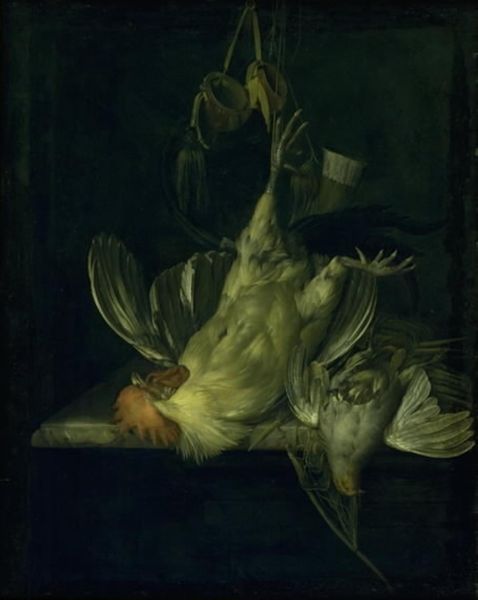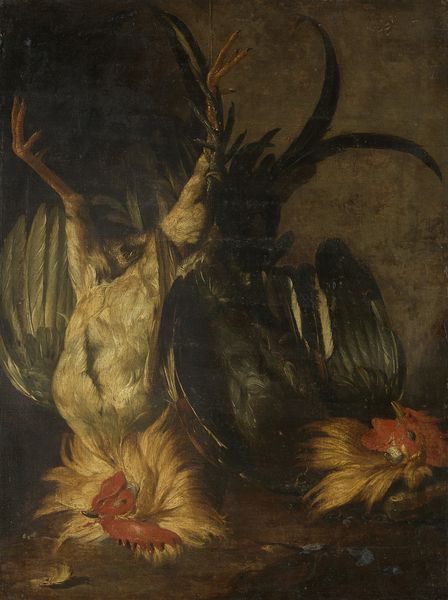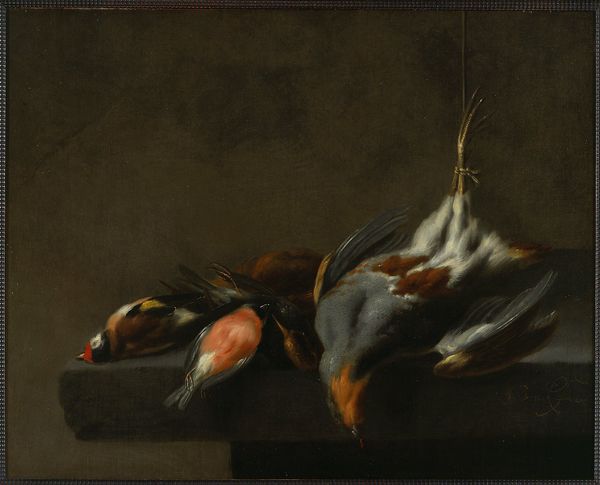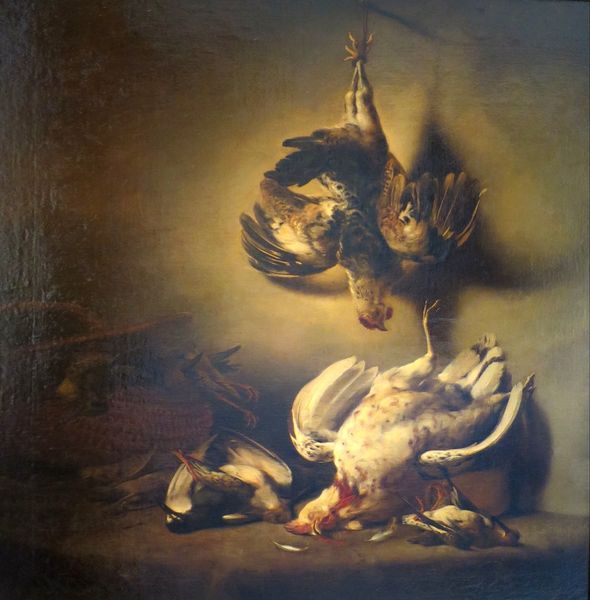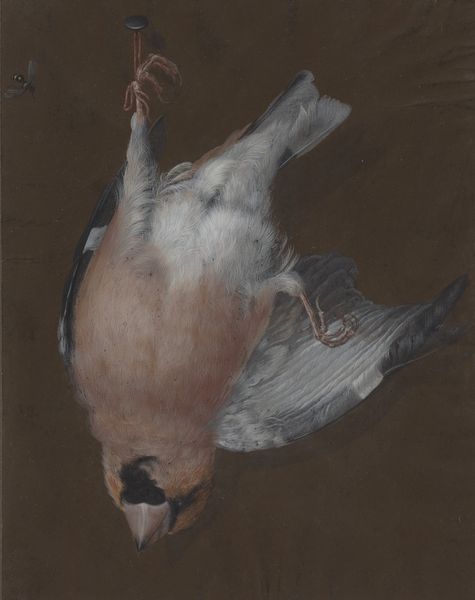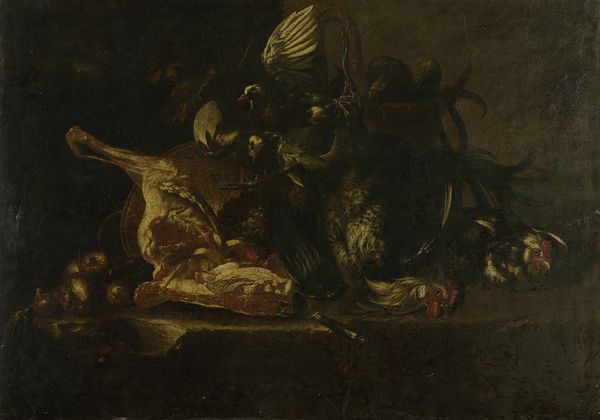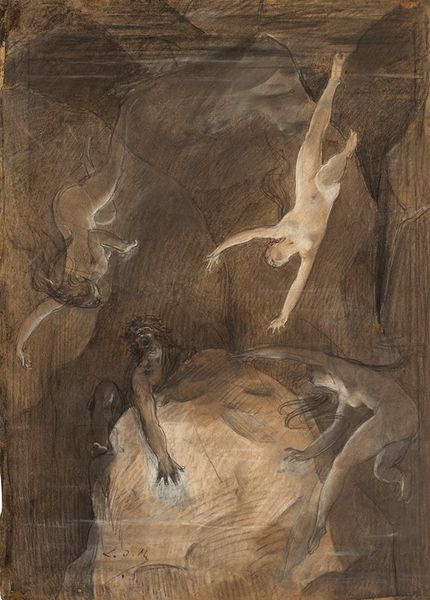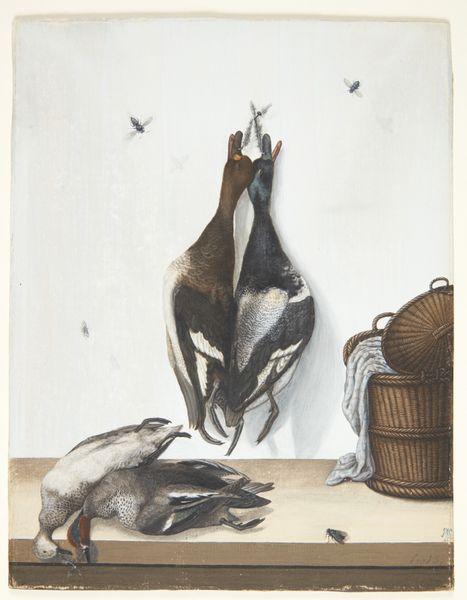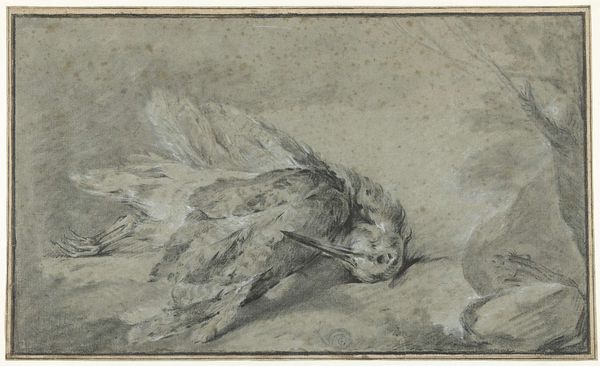
painting, oil-paint
#
baroque
#
dutch-golden-age
#
painting
#
oil-paint
#
painted
#
oil painting
#
realism
Dimensions: height 100 cm, width 92 cm, depth 10 cm
Copyright: Rijks Museum: Open Domain
Editor: This is Elias Vonck’s "Still Life with Hare, Heron and other Birds," painted sometime between 1630 and 1652, using oil paint. The arrangement is undeniably striking, even if a bit morbid. What structural elements jump out at you? Curator: The most immediately noticeable feature is the stark contrast. Observe the composition—how the artist employs the dark background to offset the textures and lighter hues of the animals. Consider how this interplay manipulates spatial relationships within the frame. Editor: The hanging hare certainly draws the eye upward, but then the heron seems to anchor the composition. Do you think the artist is making a deliberate comment on the natural hierarchy here? Curator: Perhaps. Consider also how the texture of the fur differs so greatly from the smoothness of the heron's feathers, and how the arrangement facilitates this tactile contrast. Editor: So, you are looking at how the pure visual language establishes both tension and balance? The realism is remarkable; you can almost feel the weight and the different textures. Curator: Precisely. Furthermore, note the painterly technique, the visible brushstrokes adding another layer to its texture, another dimension to the formal analysis. Vonck draws attention to the materiality of the painting itself, reminding us that this is not reality but a constructed representation. Editor: It's a bit unsettling to realize that technical skill and formal structure can make something so…stark, so aesthetically compelling. Curator: Indeed. Focusing on these core artistic elements allows a deeper understanding, removing the focus from its potentially sentimental readings. We are invited to analyze art as form.
Comments
No comments
Be the first to comment and join the conversation on the ultimate creative platform.
